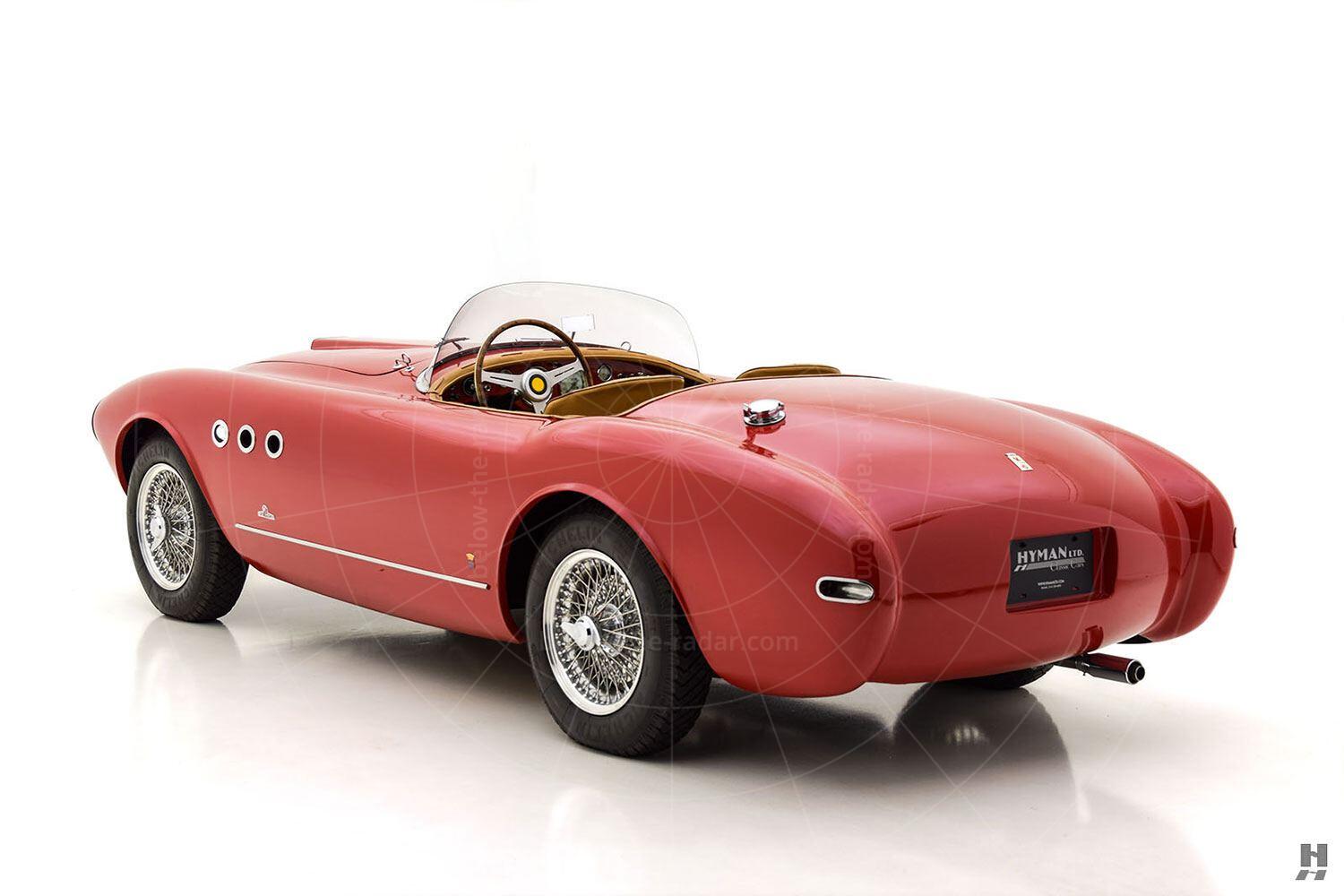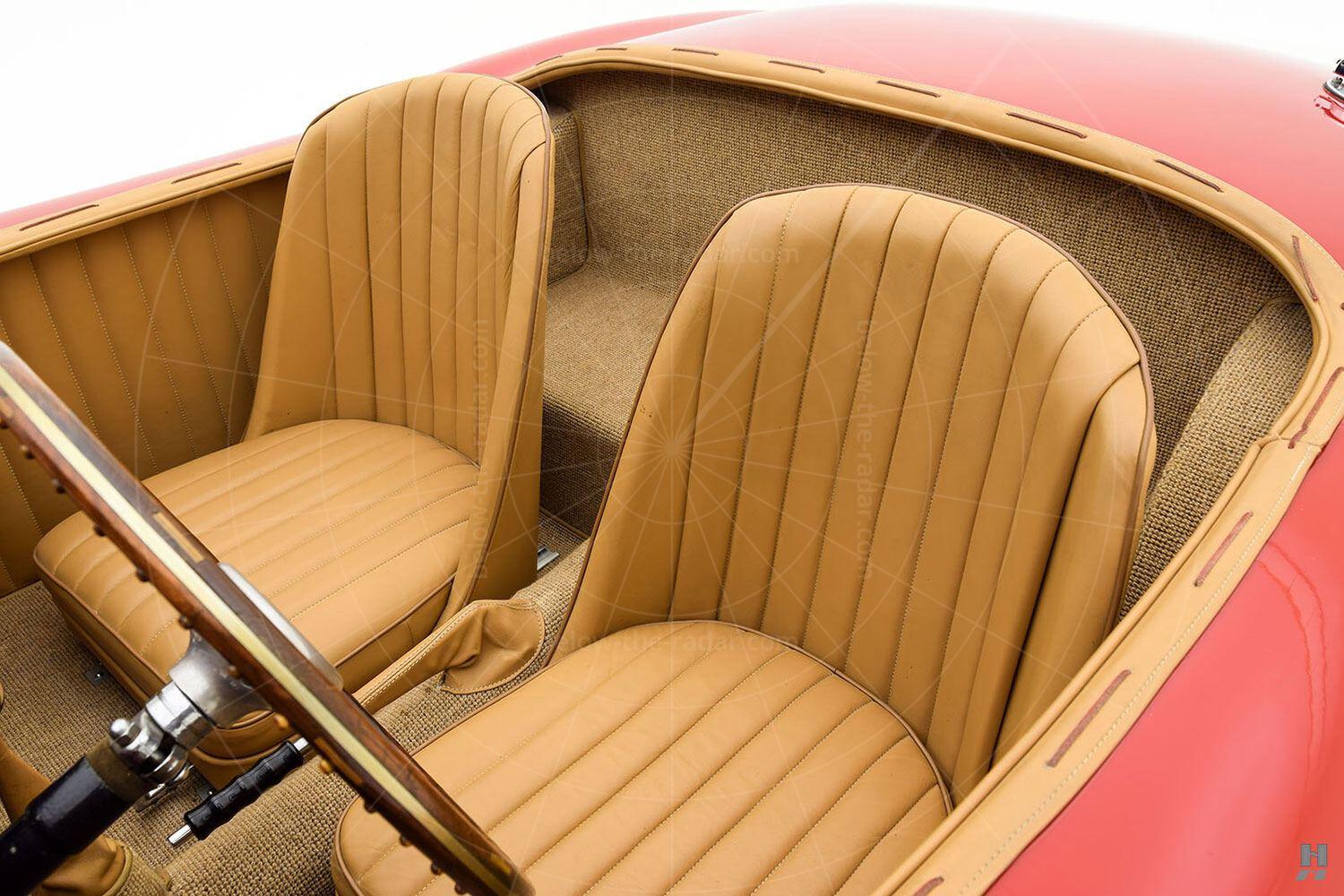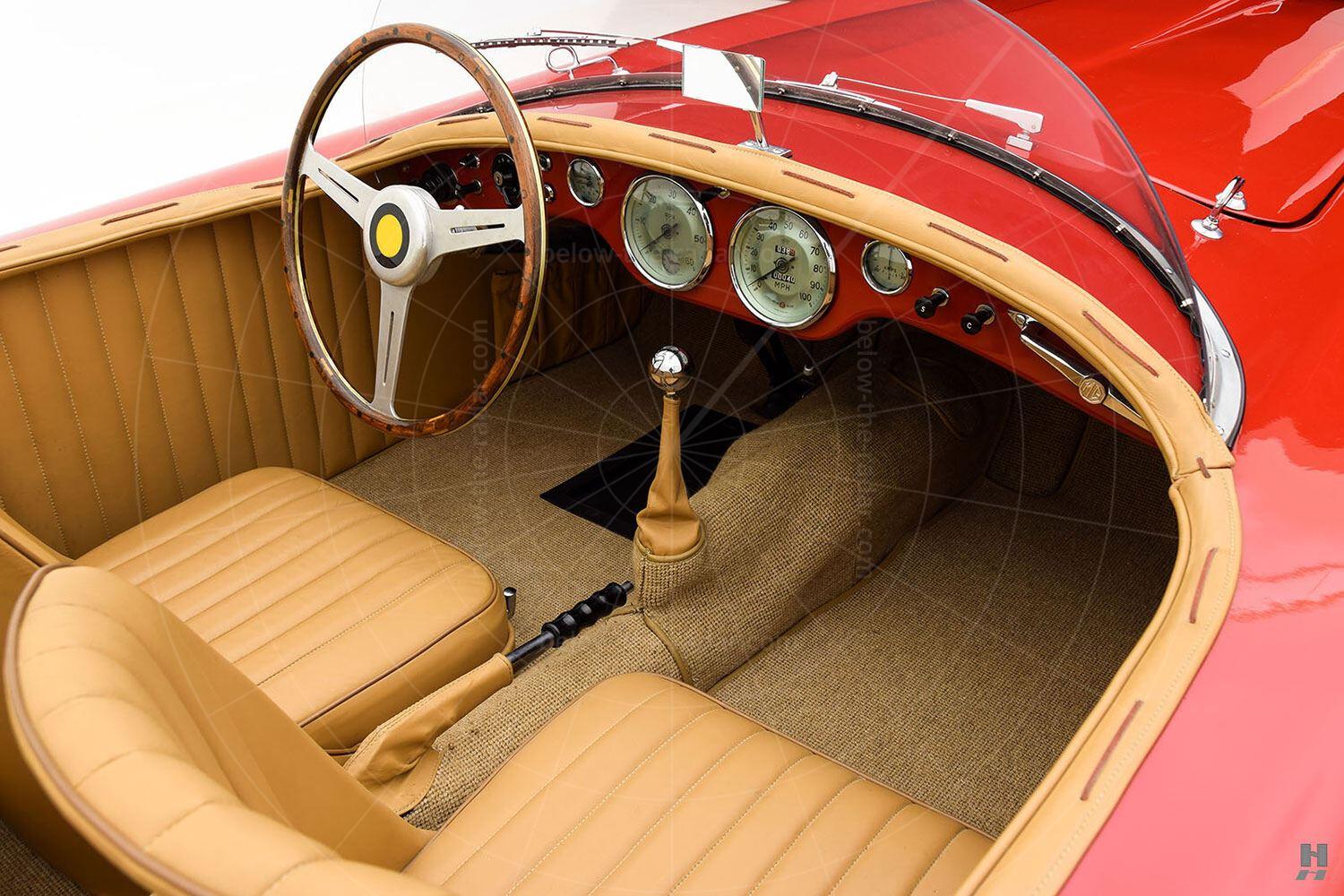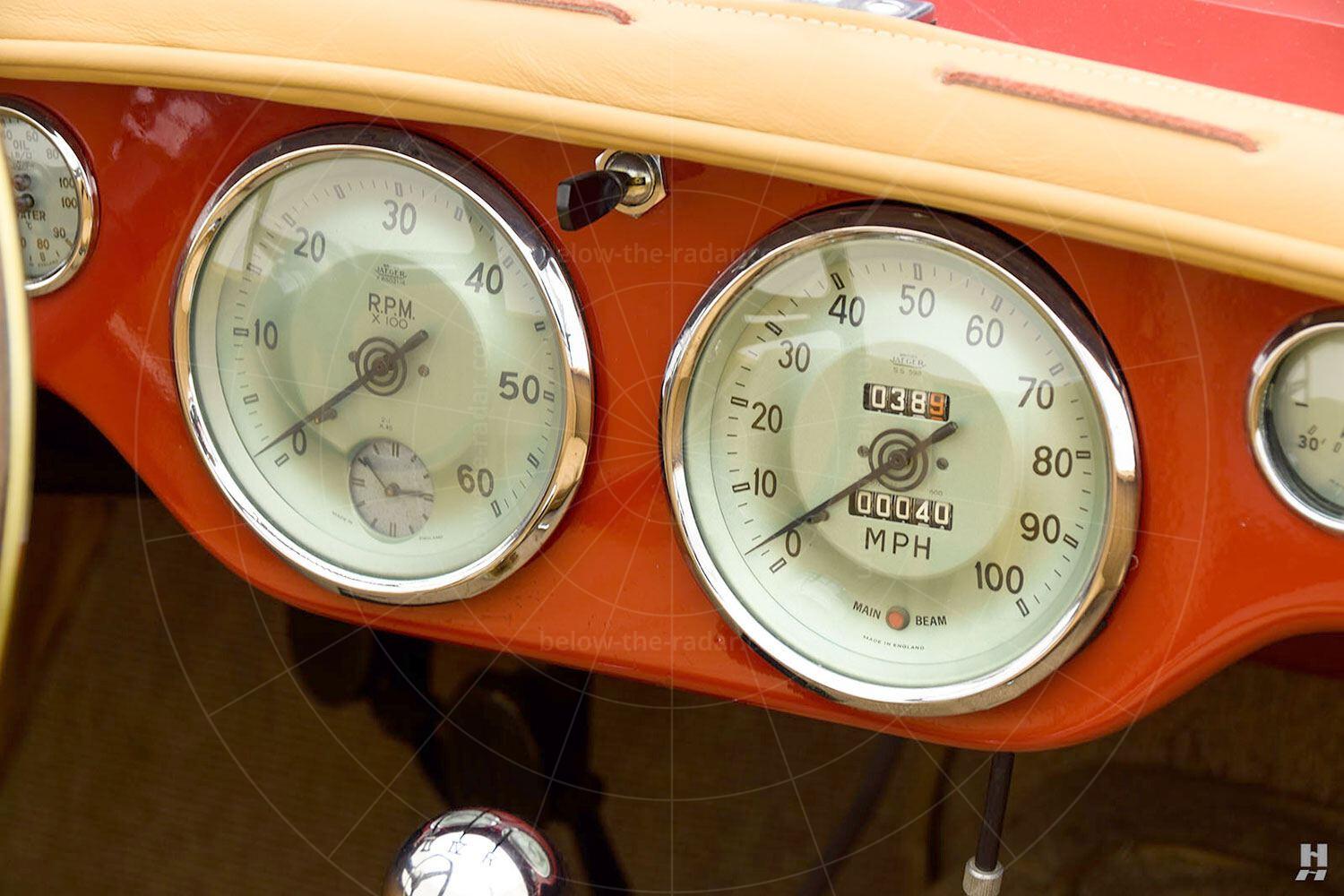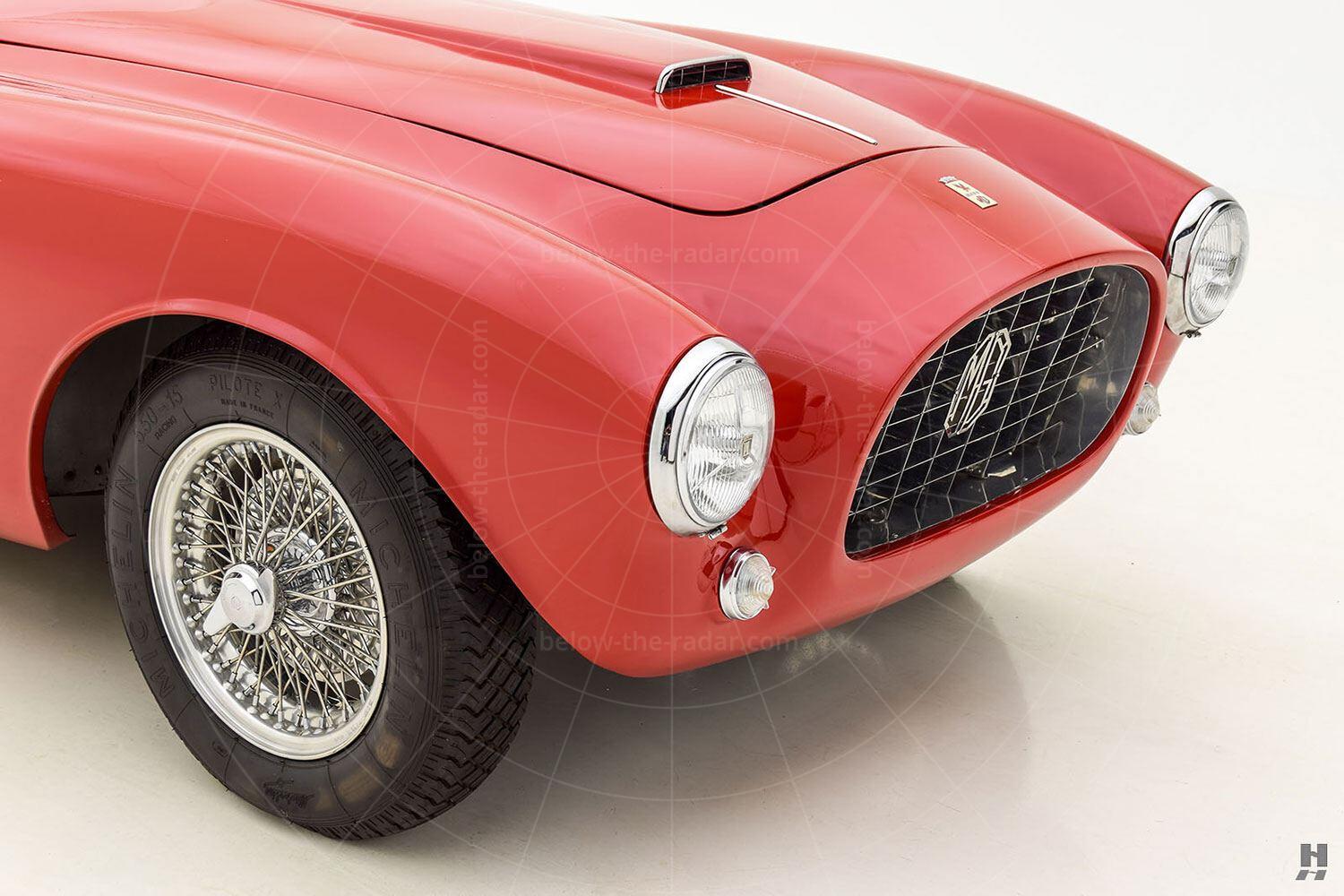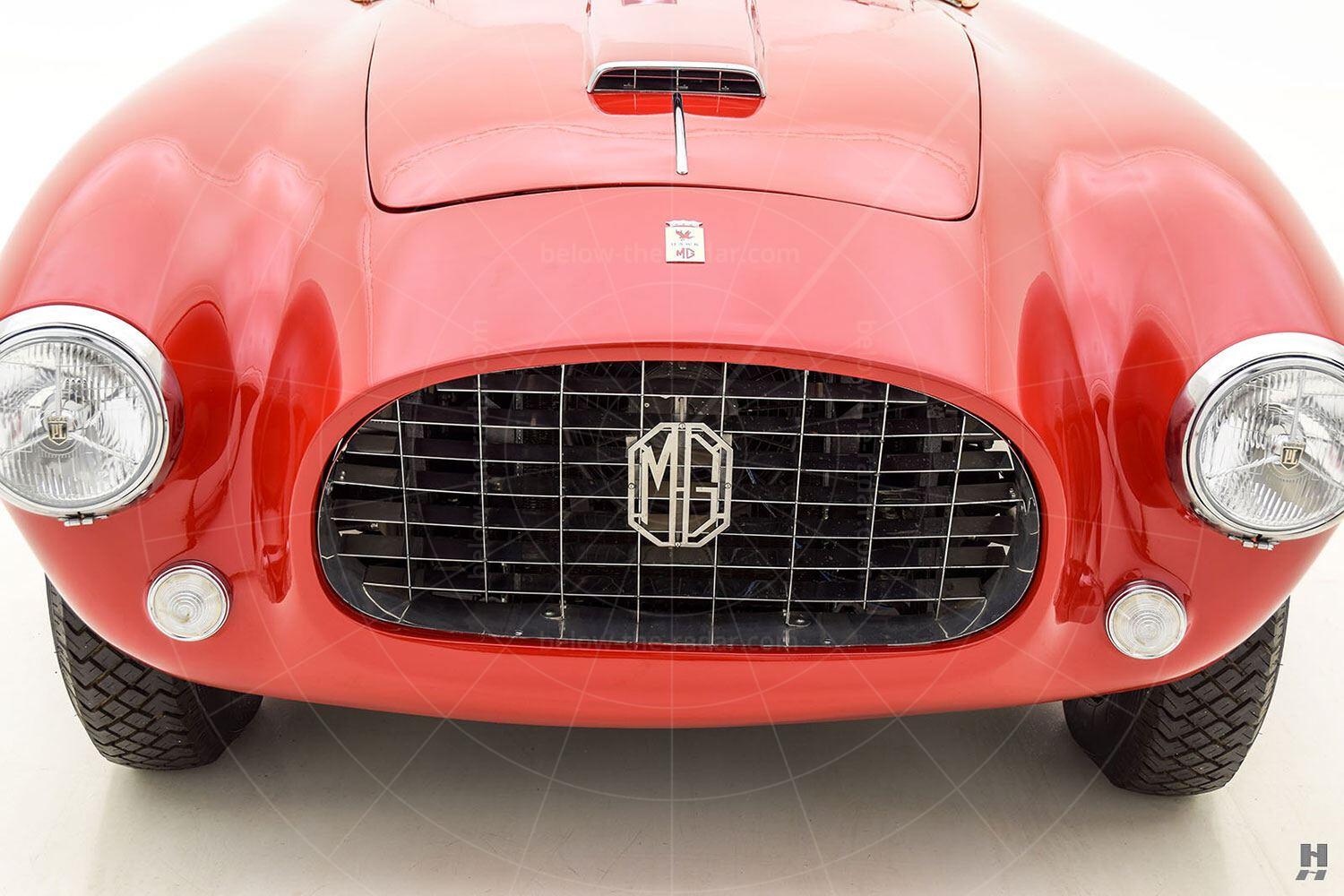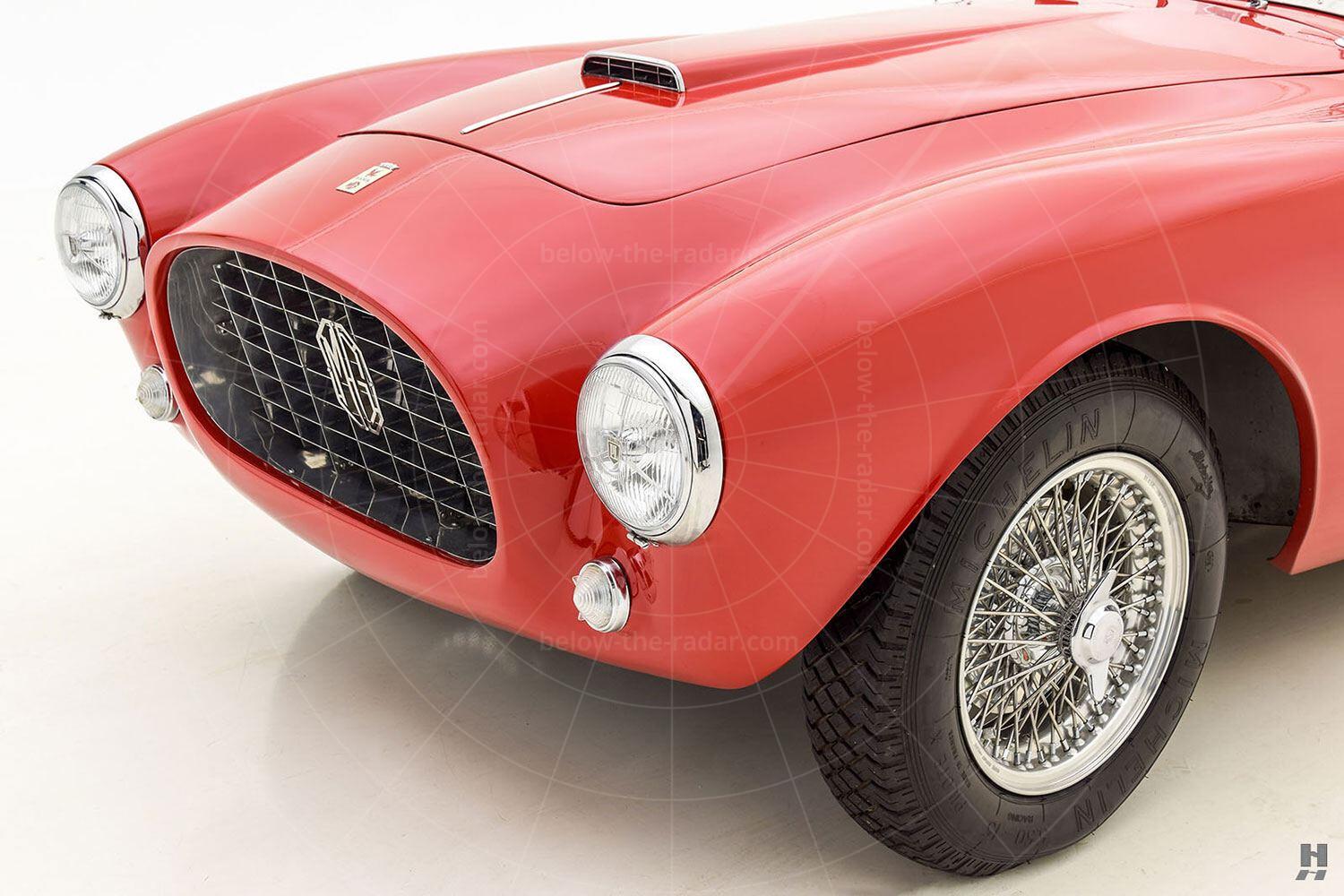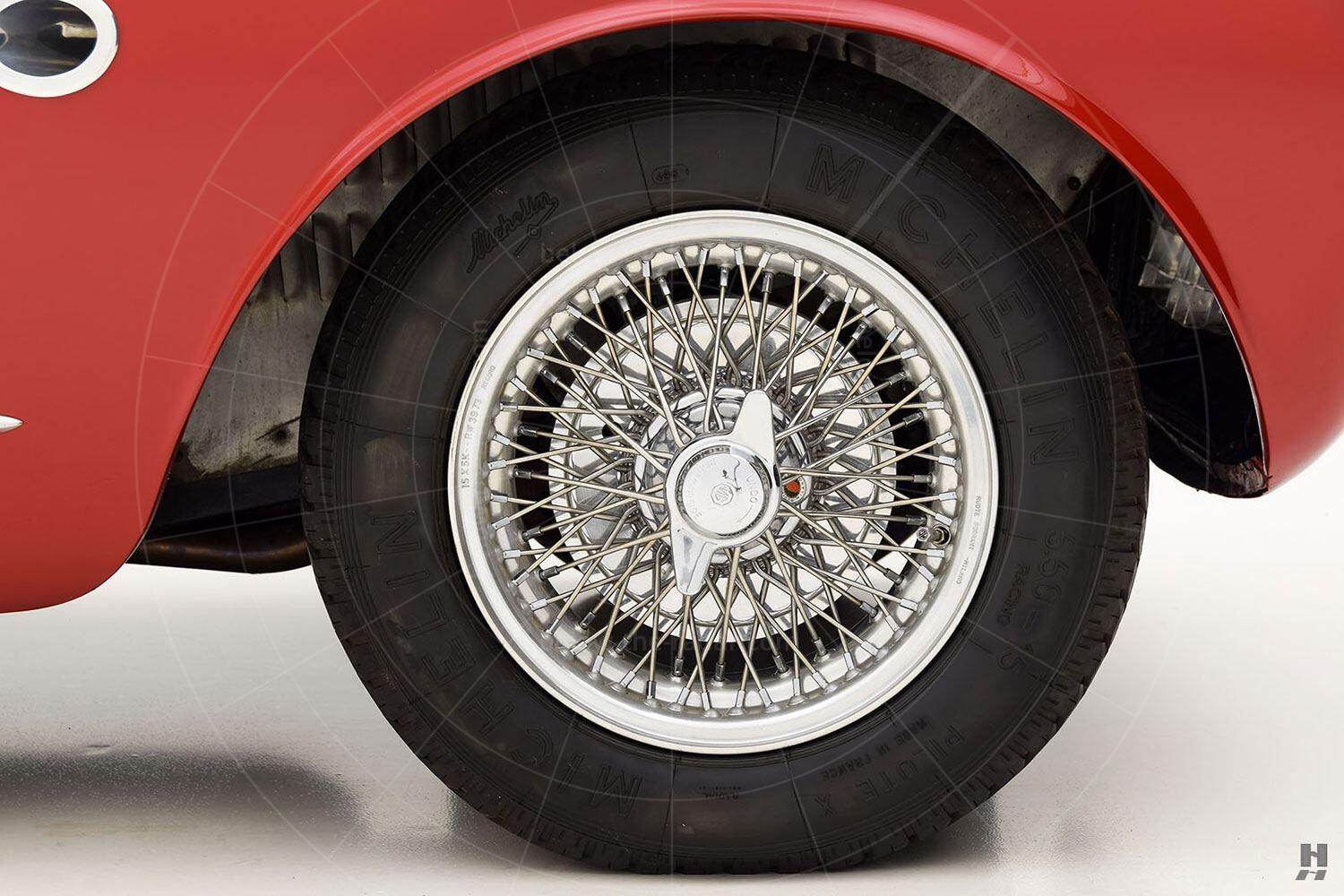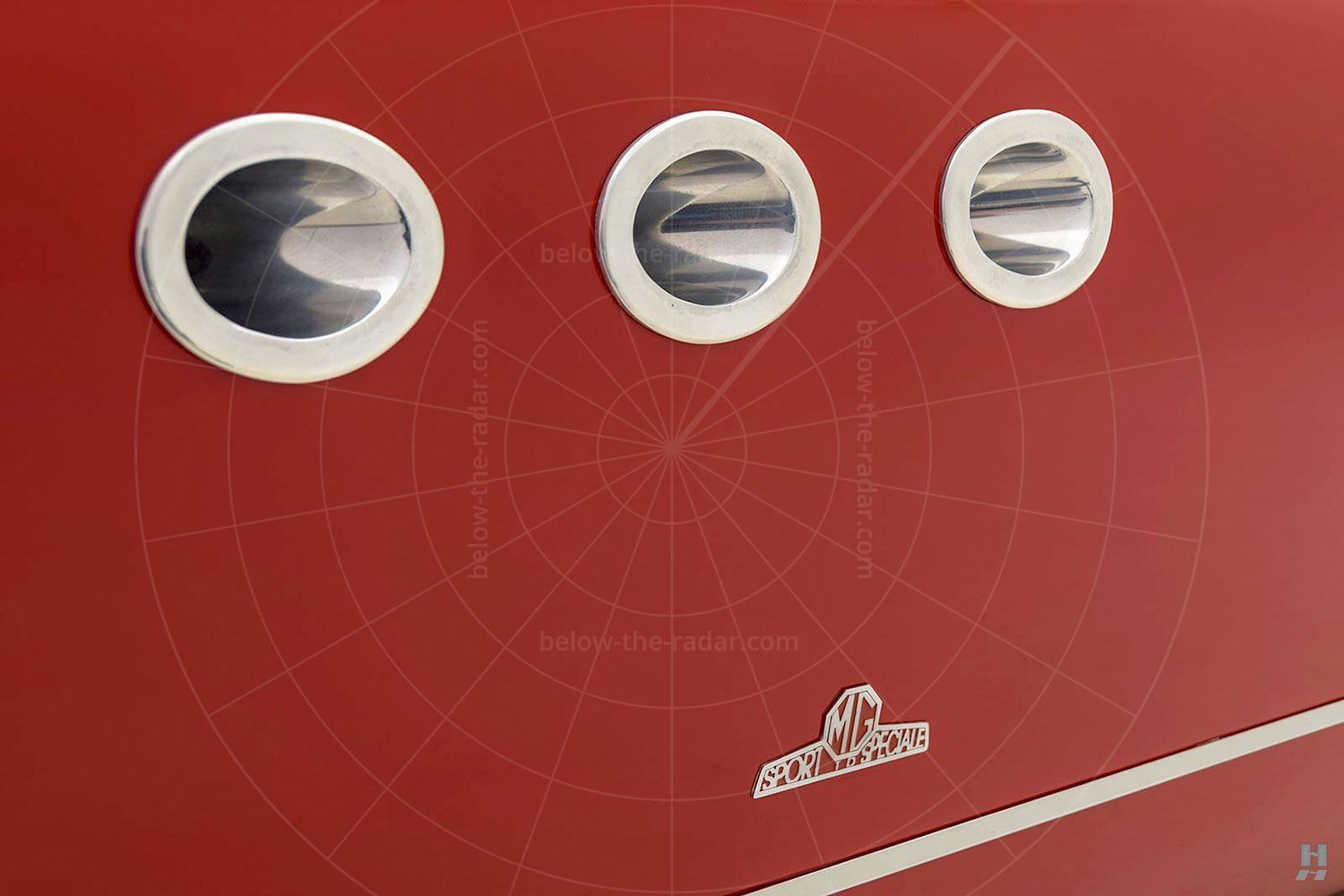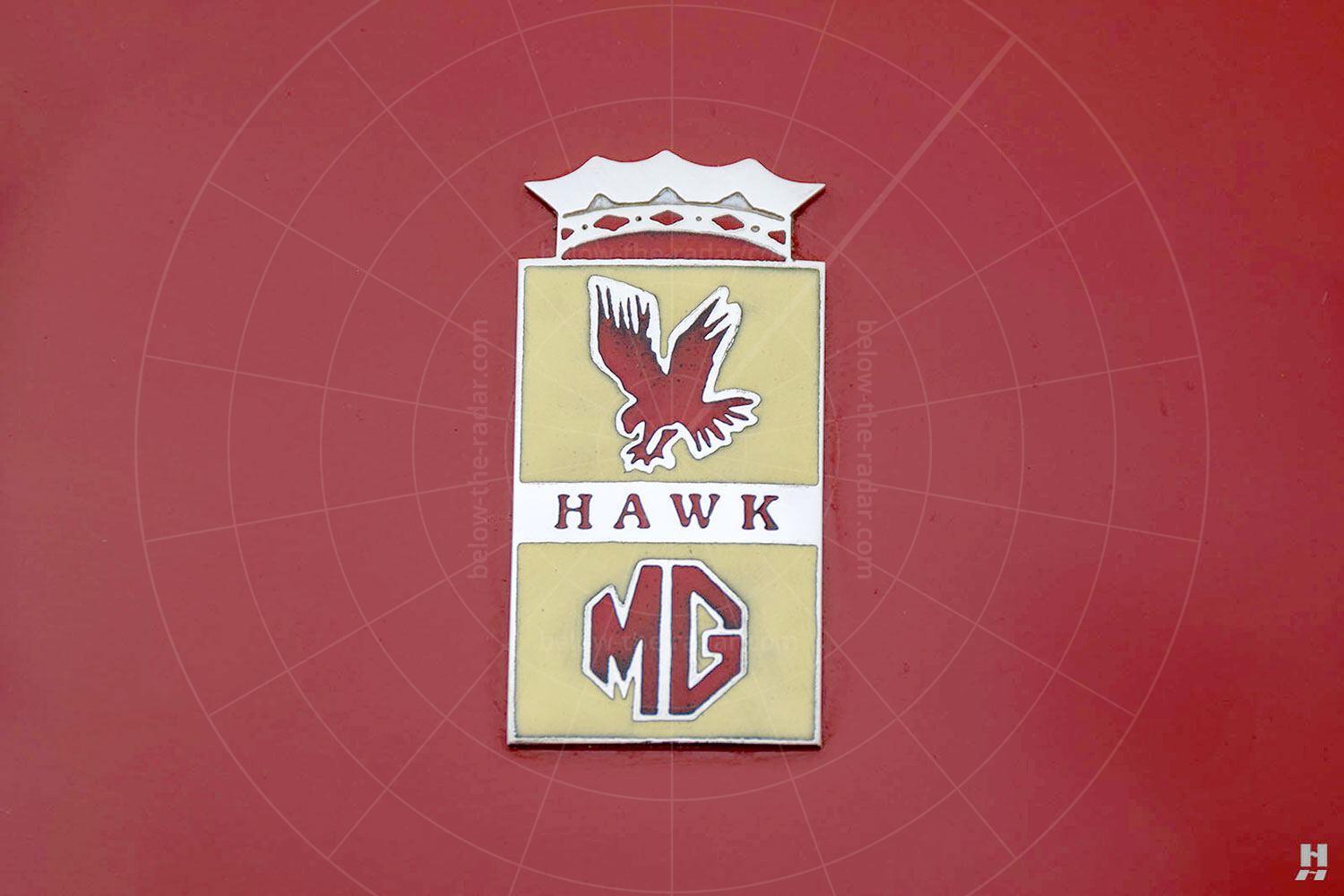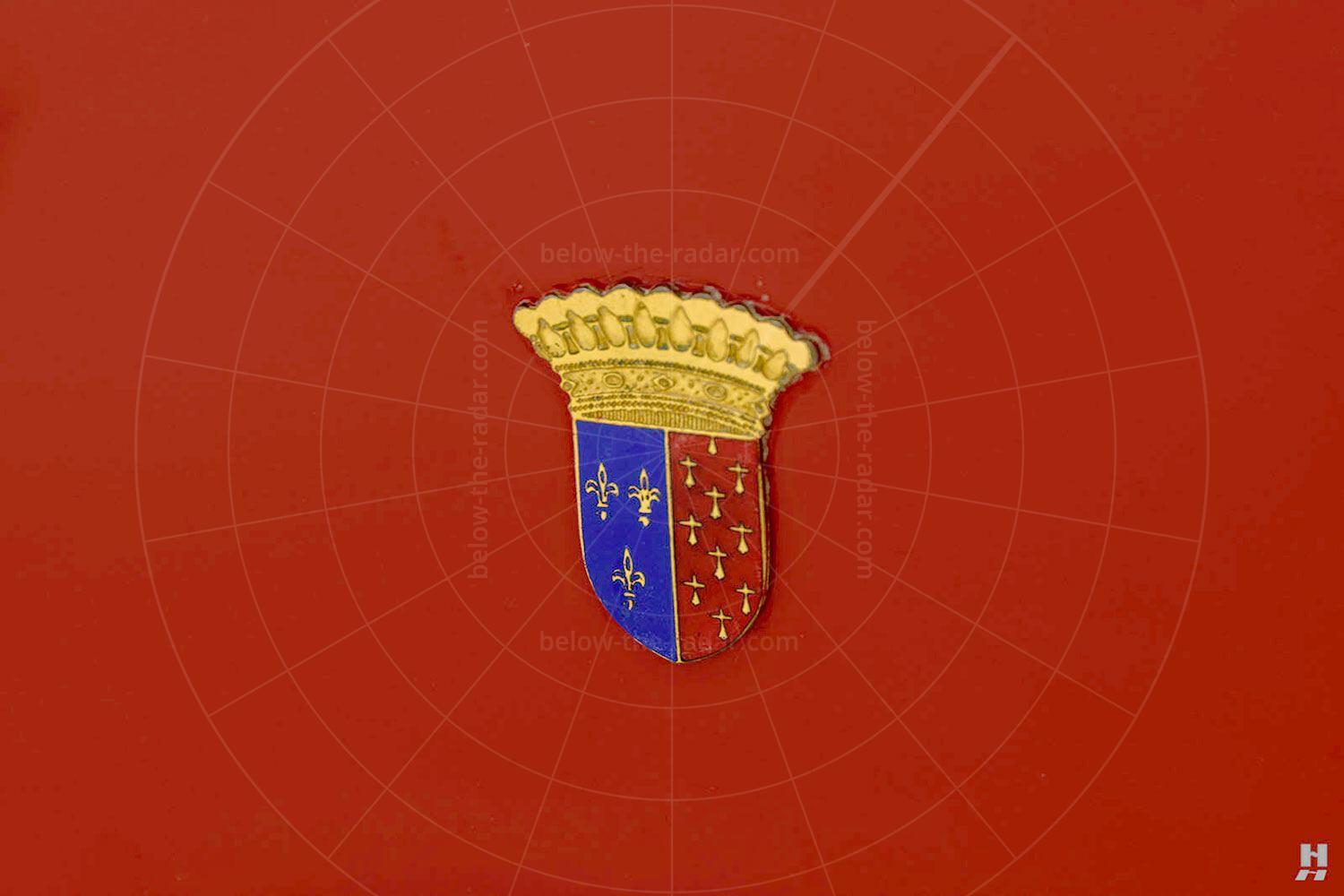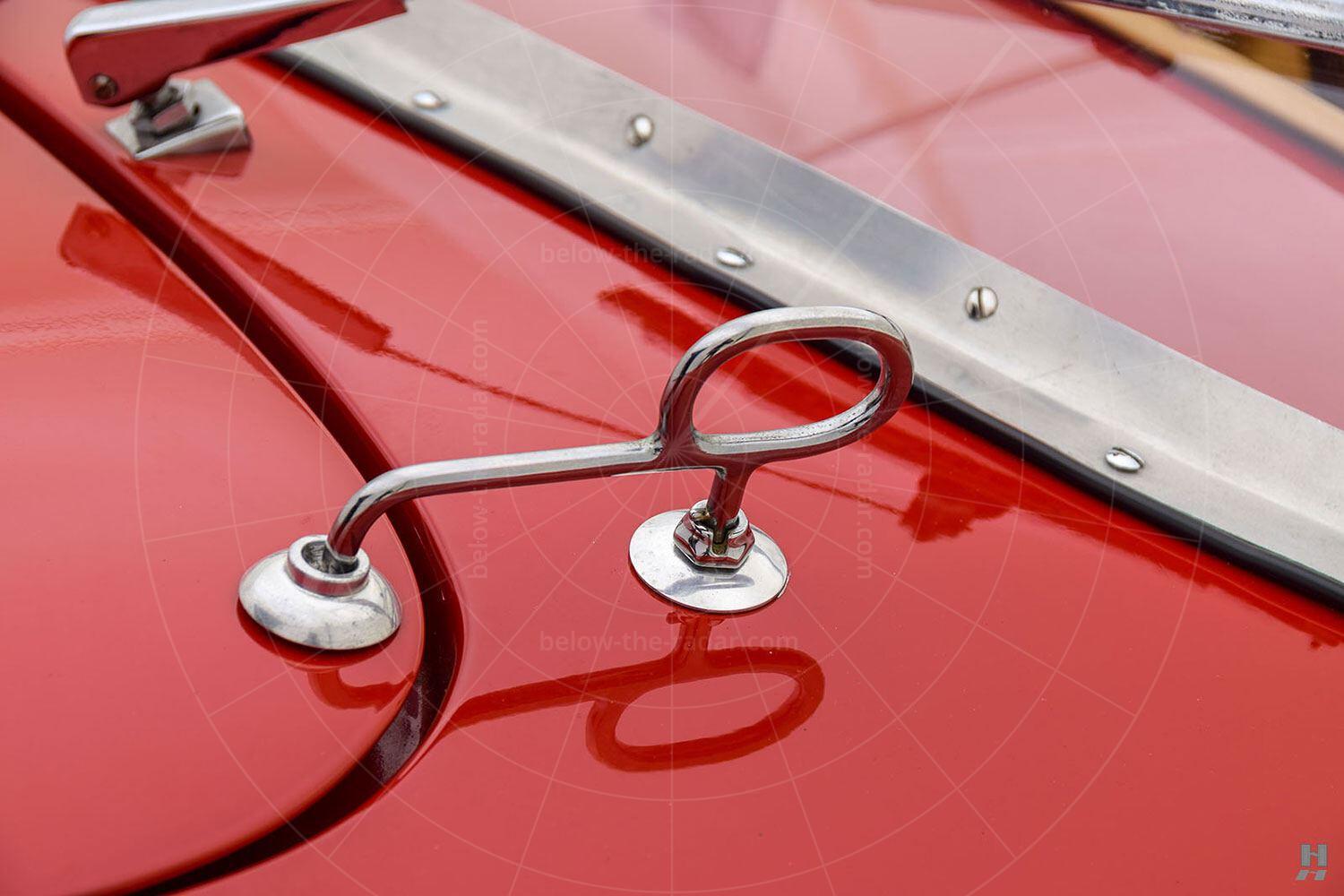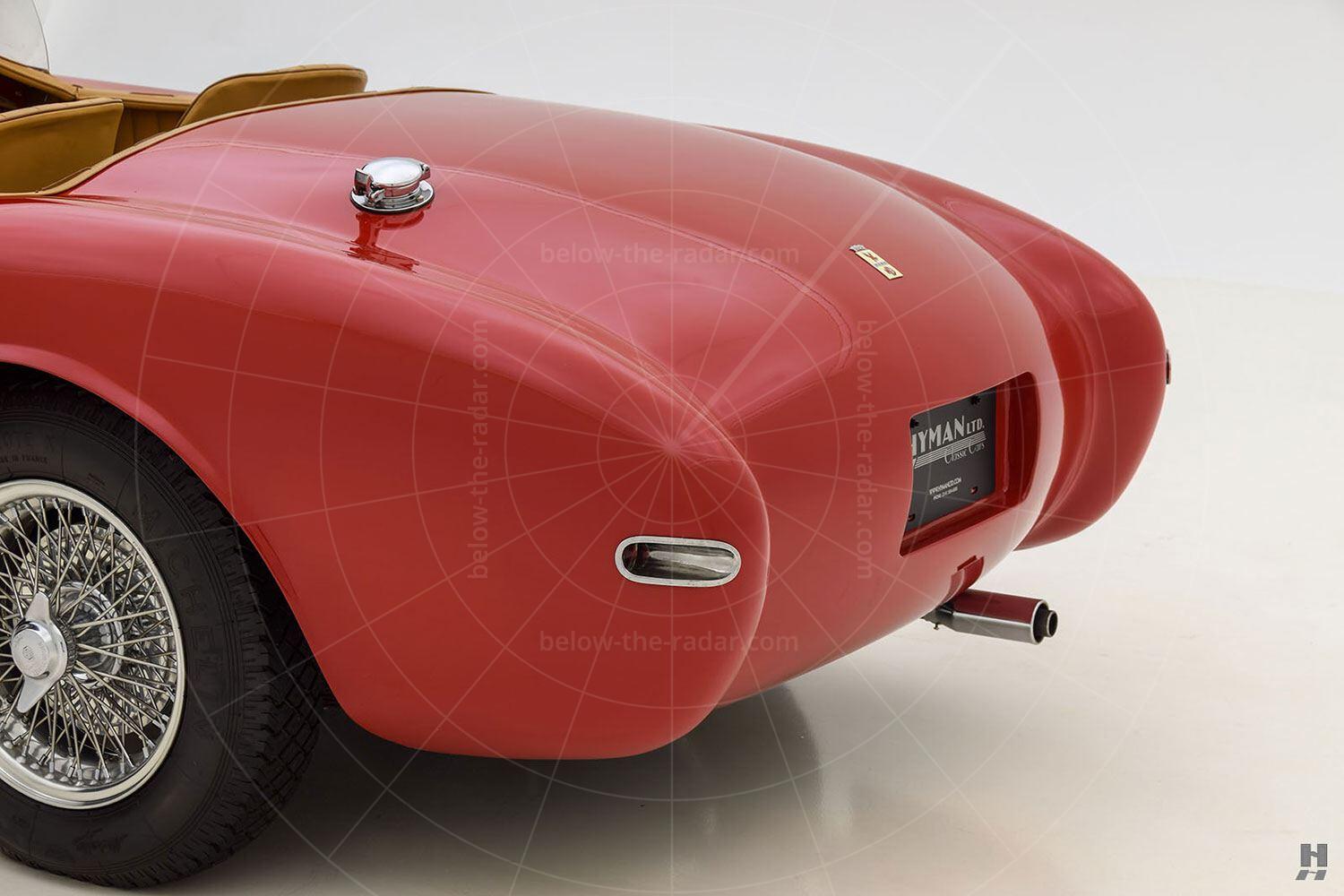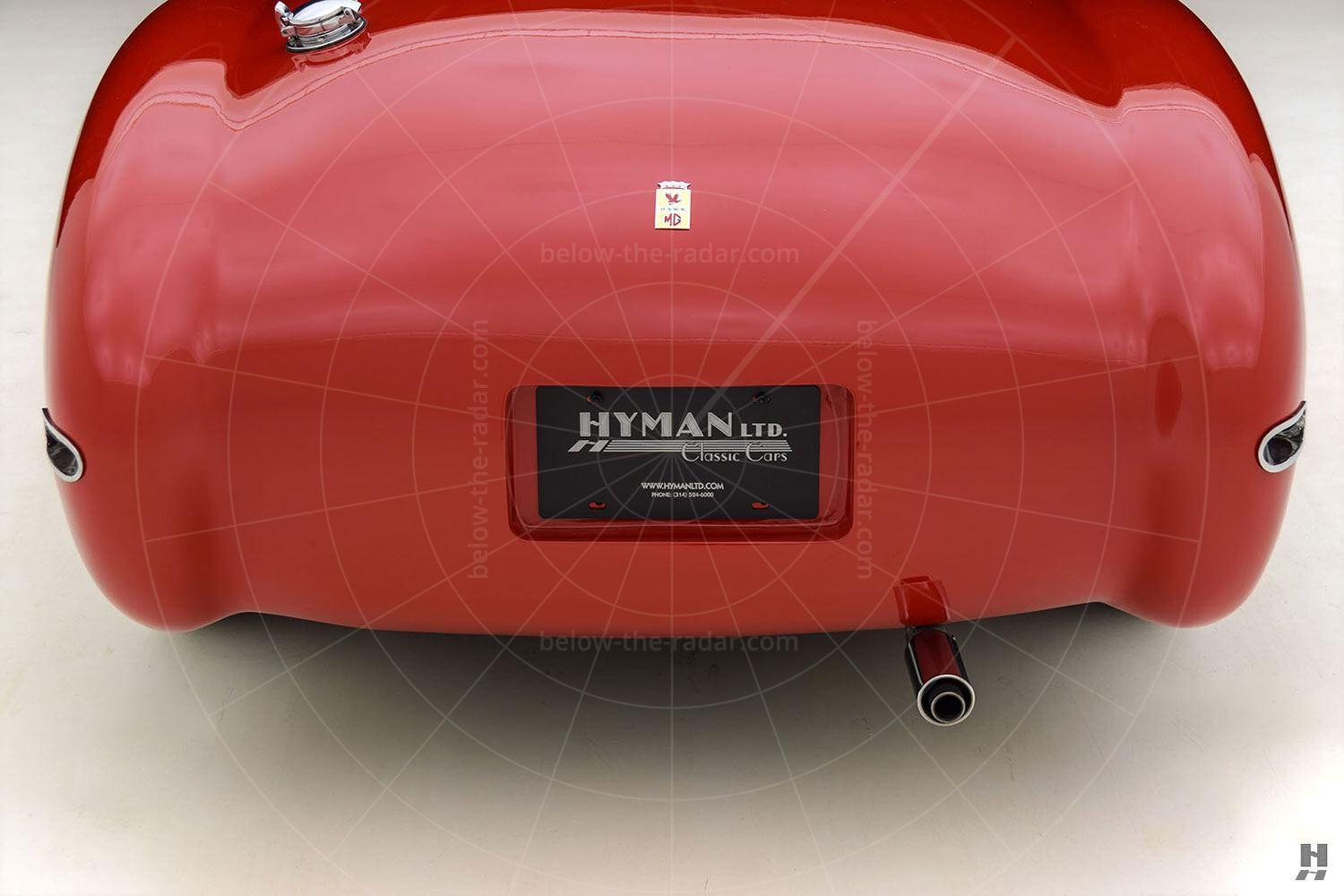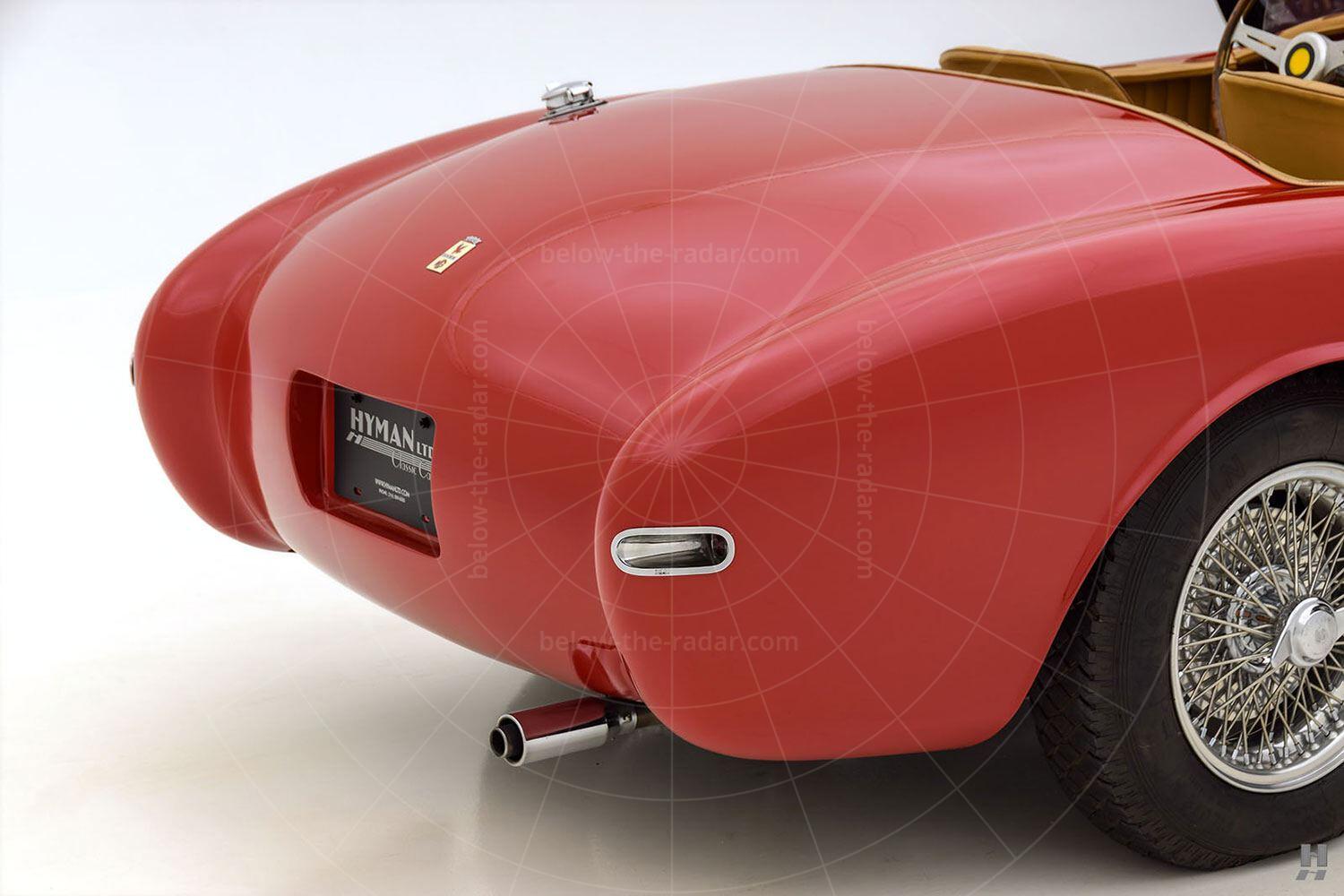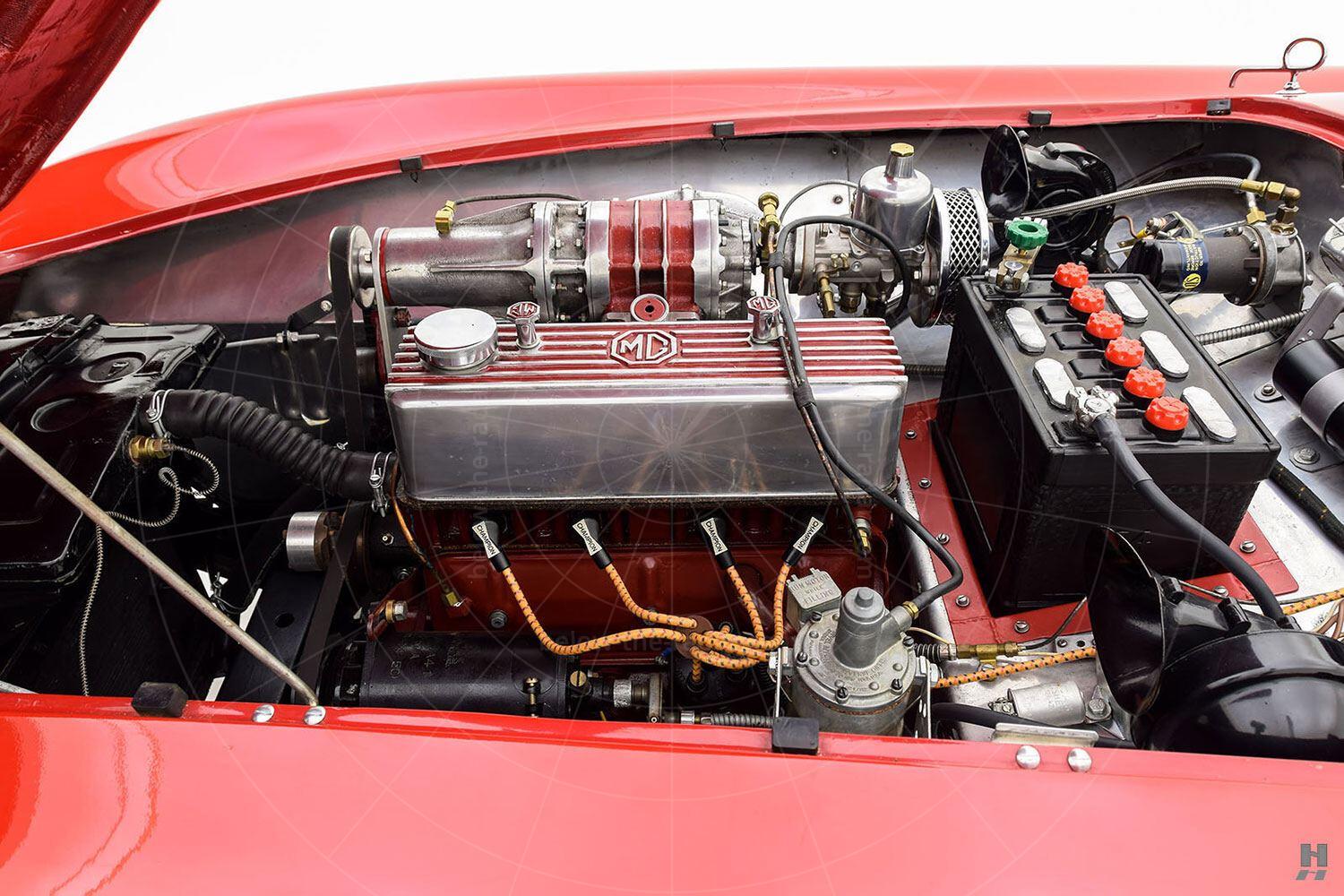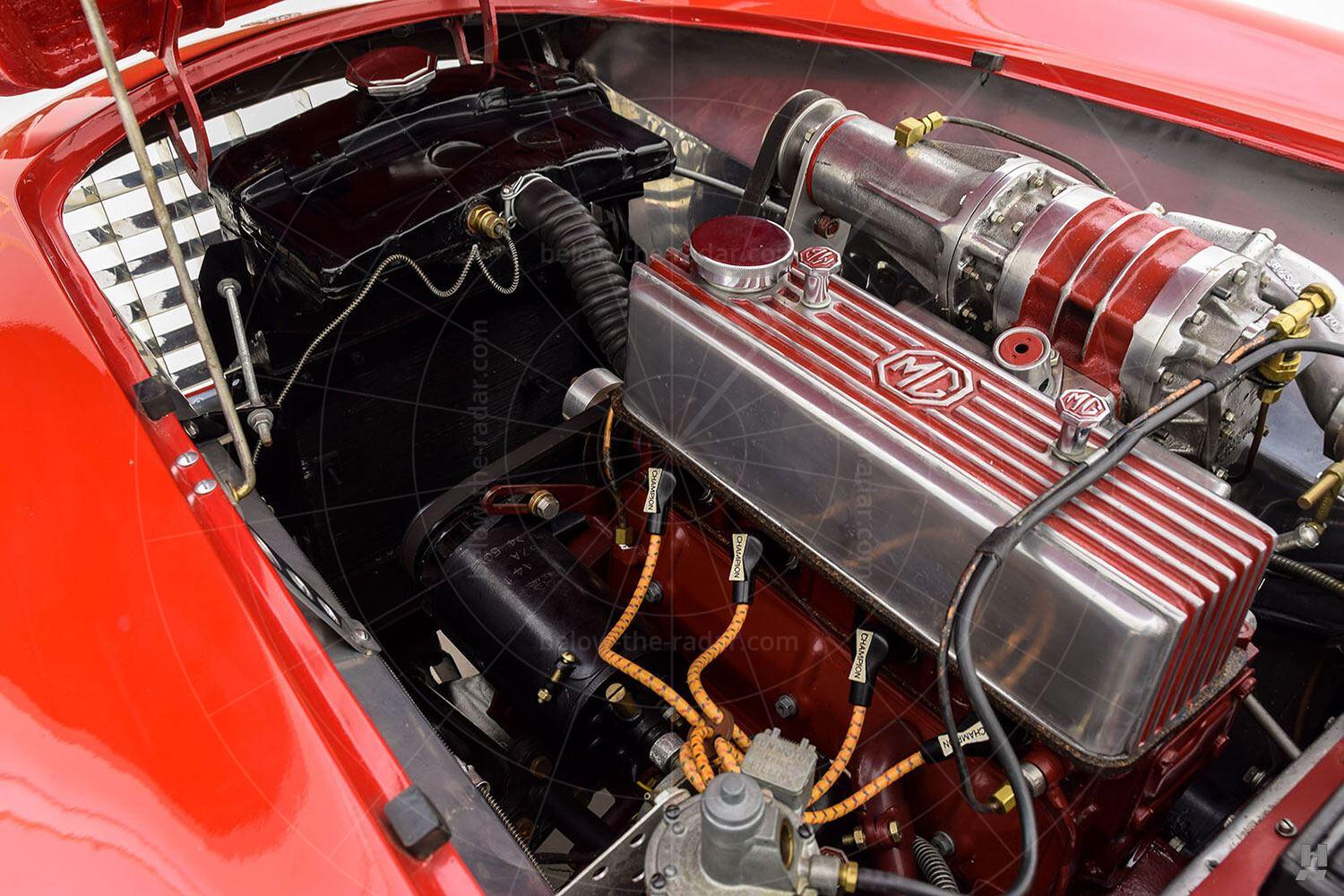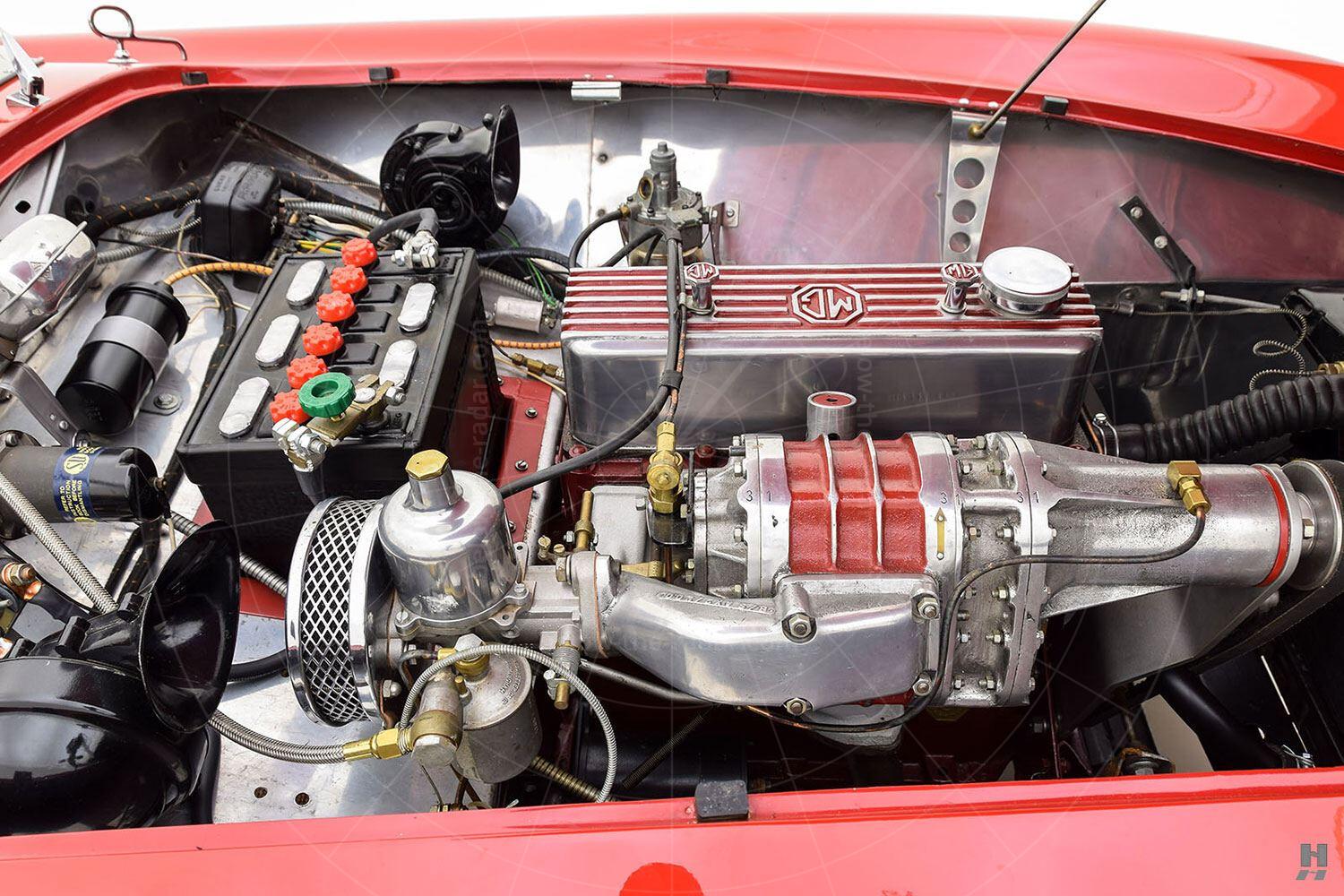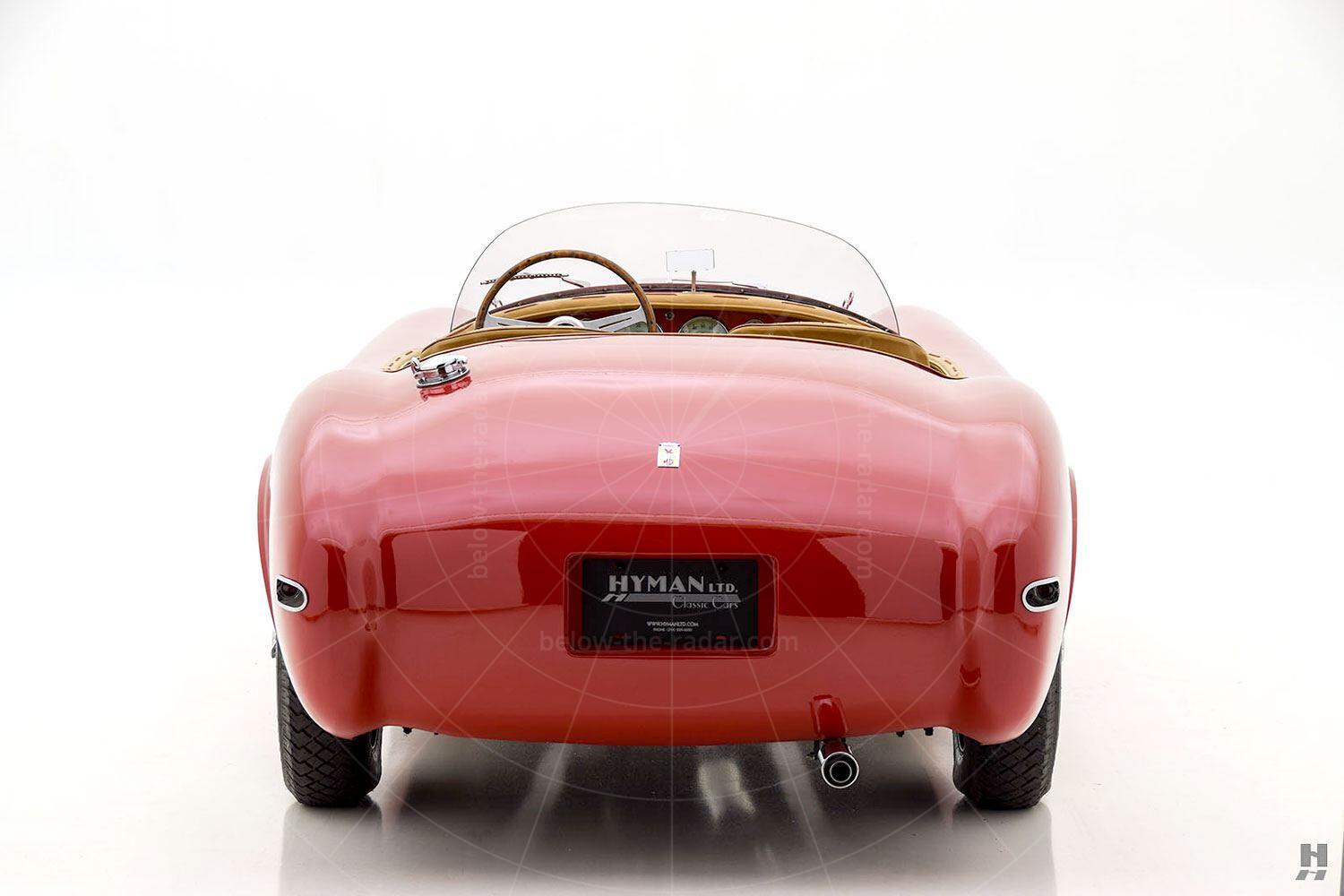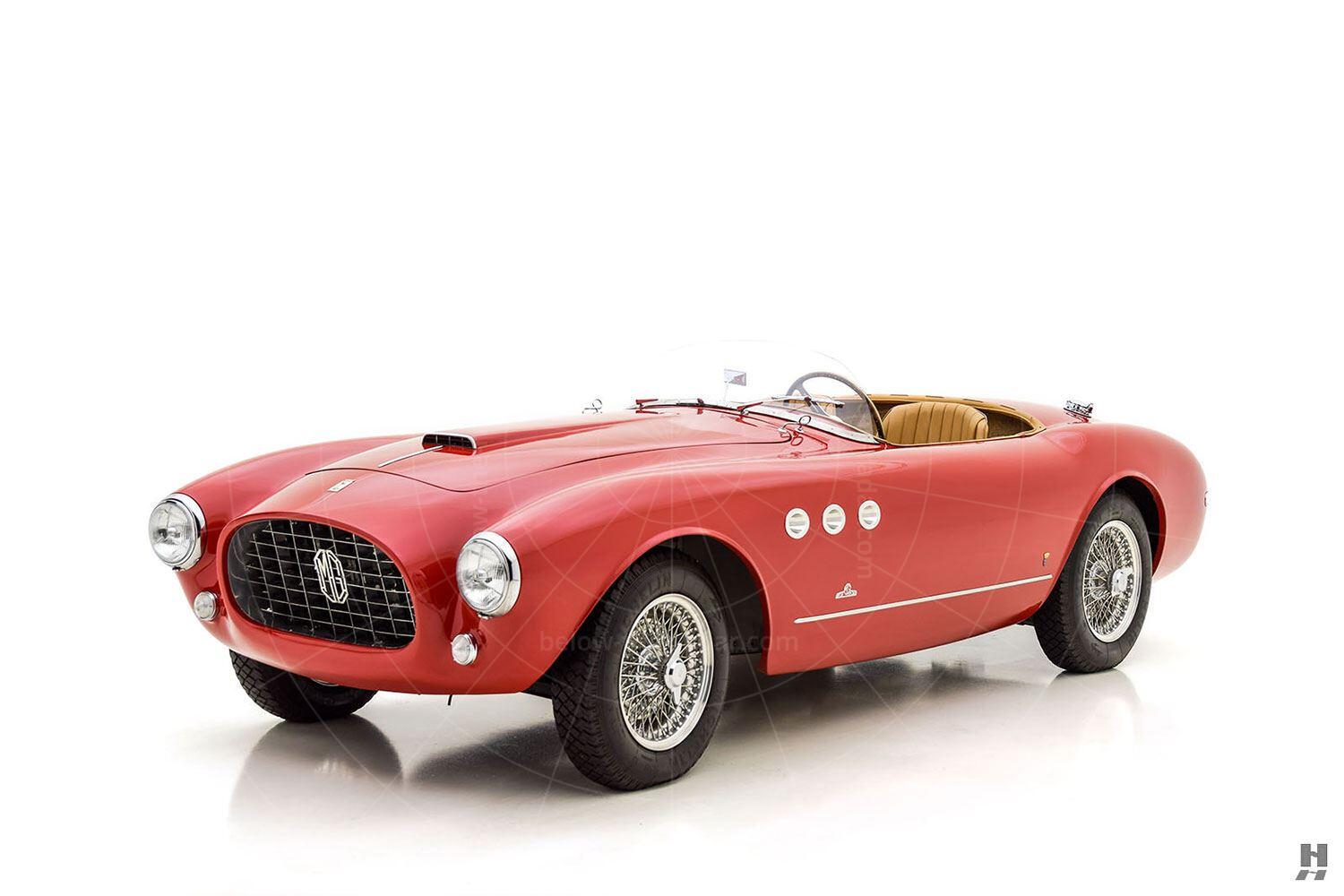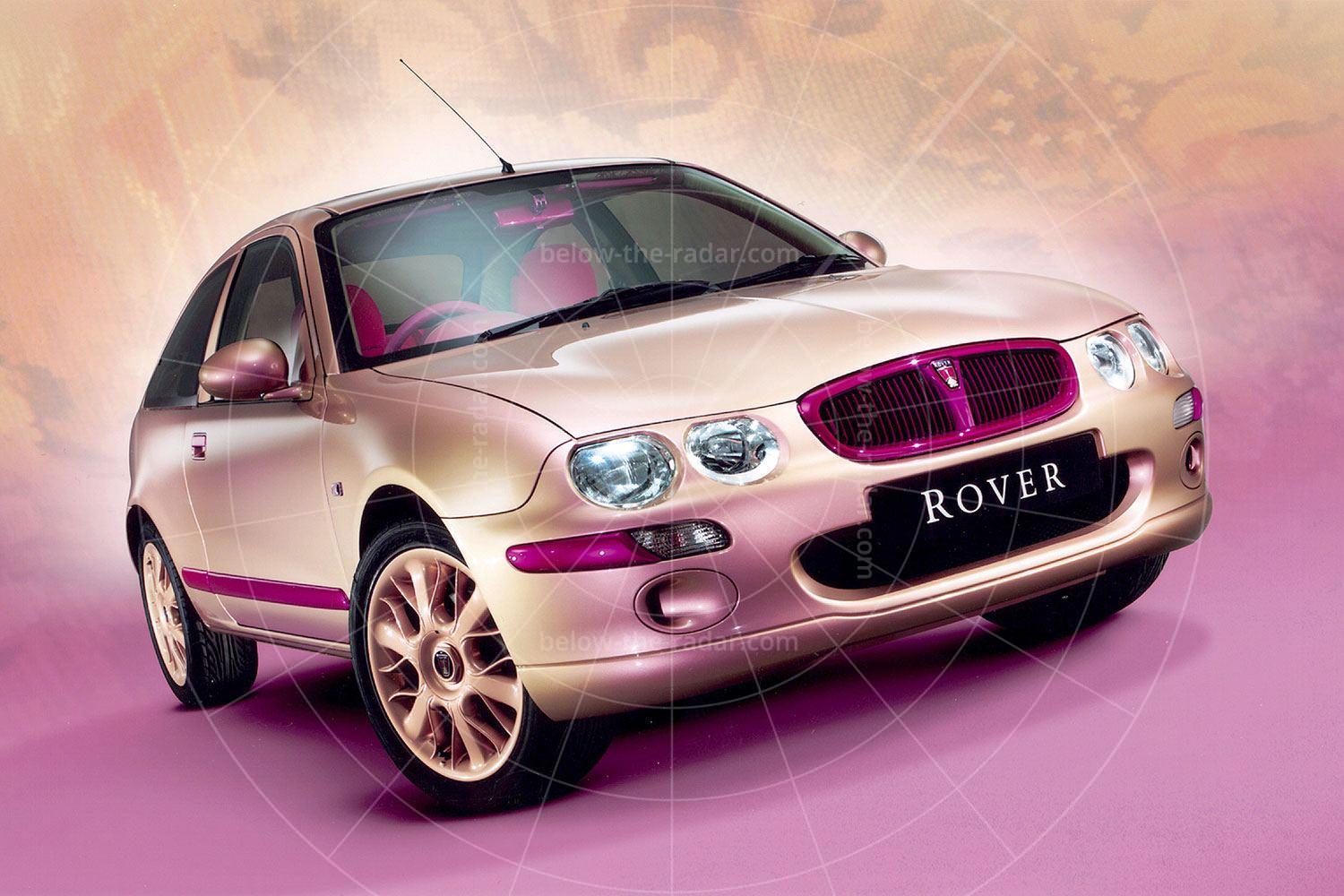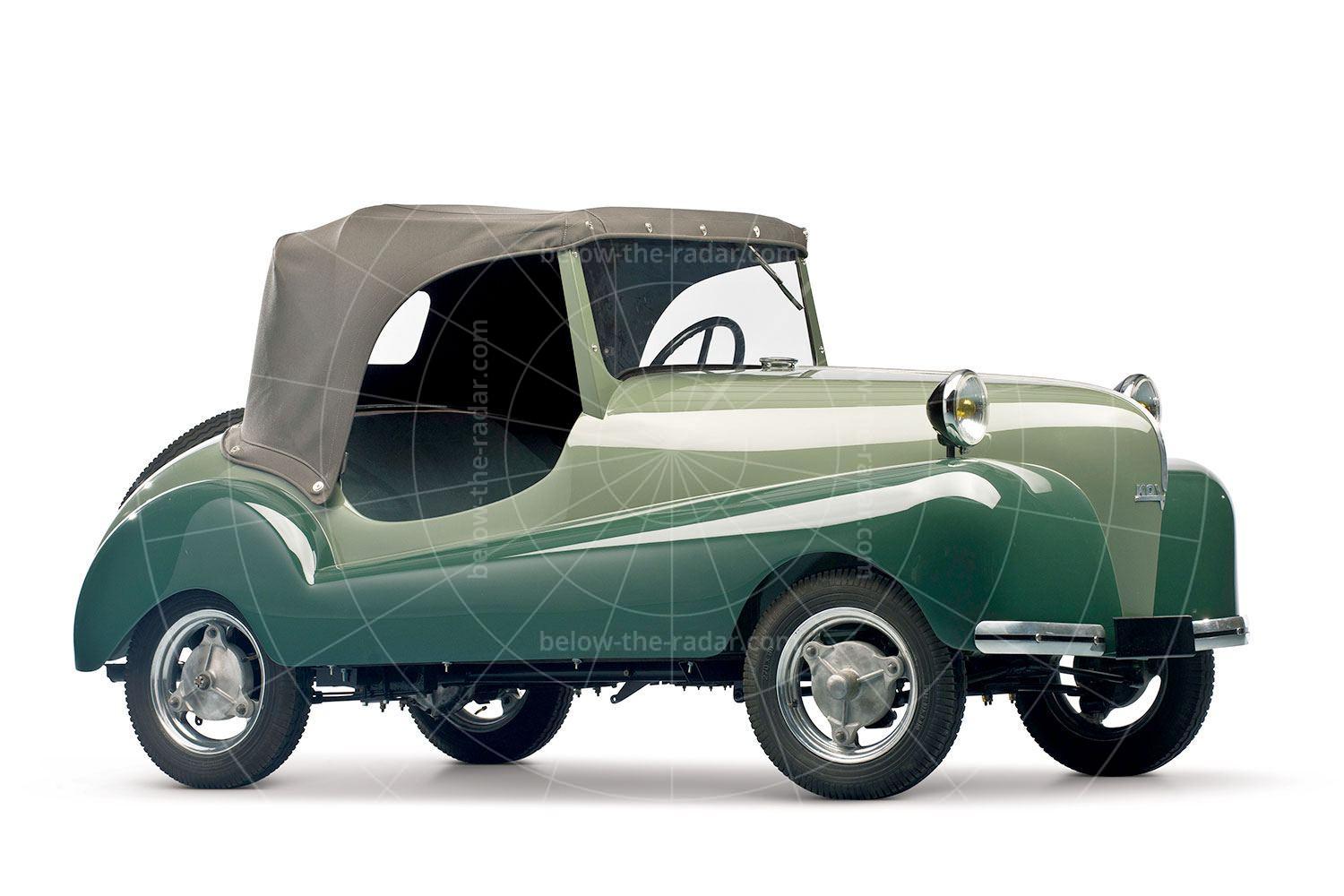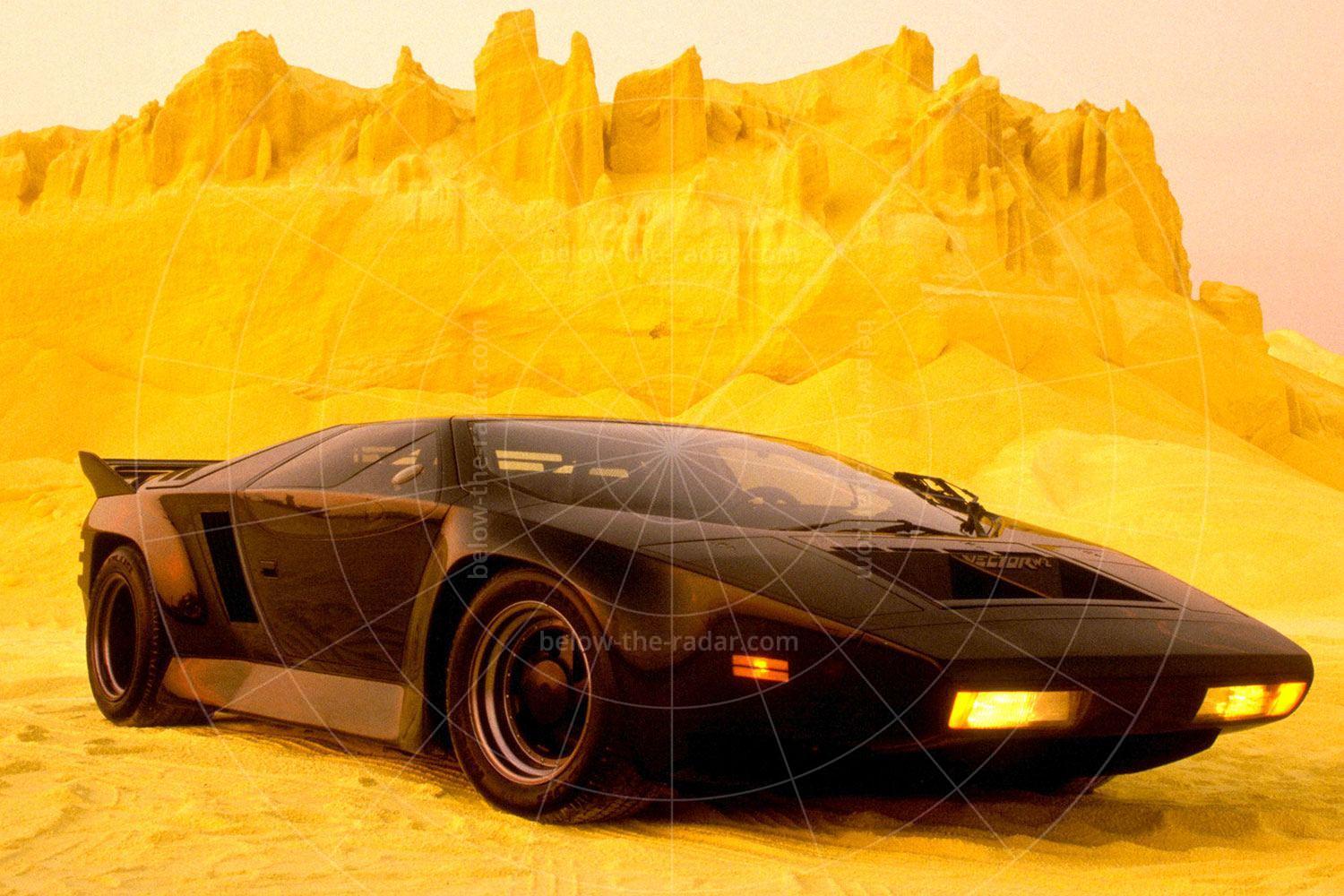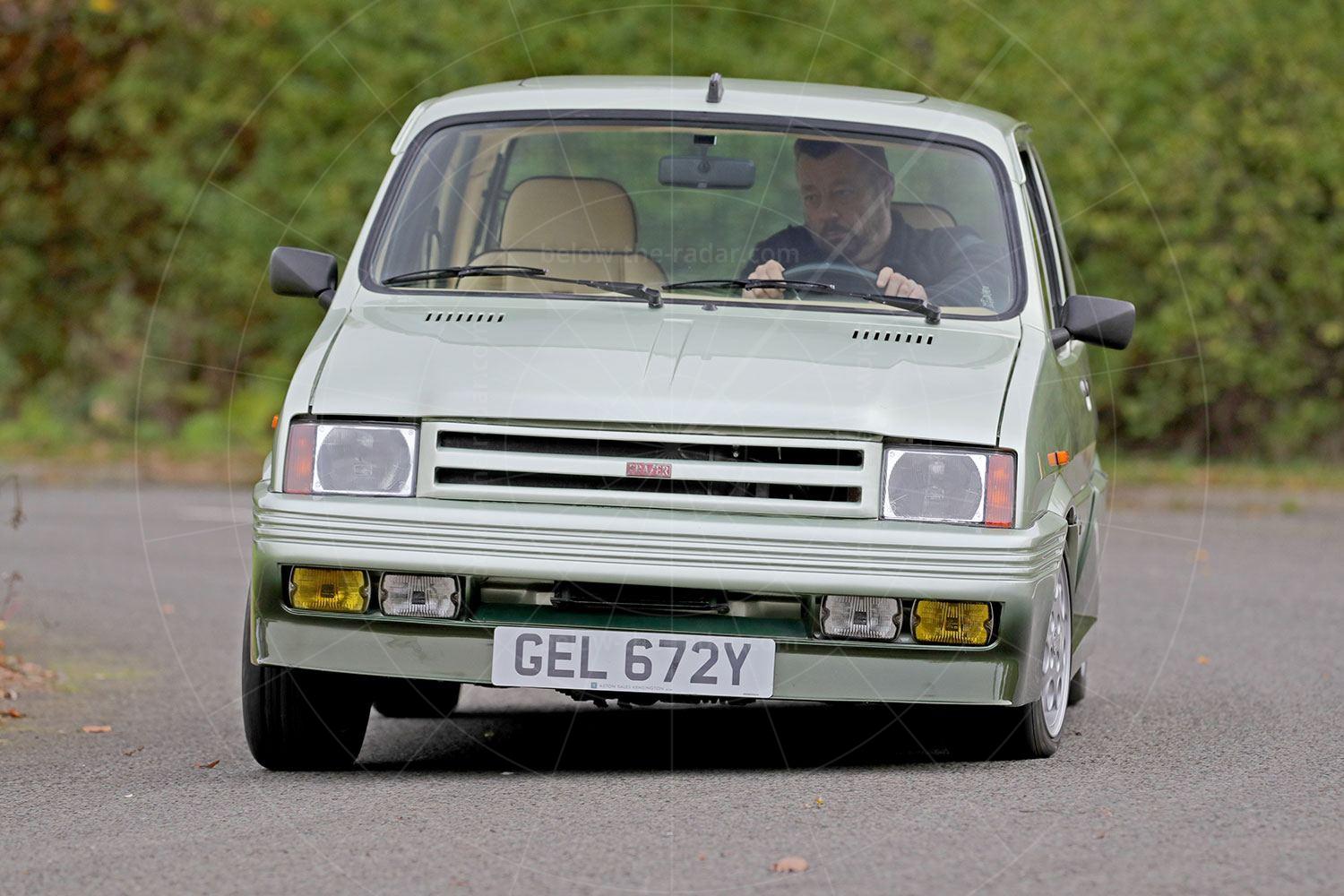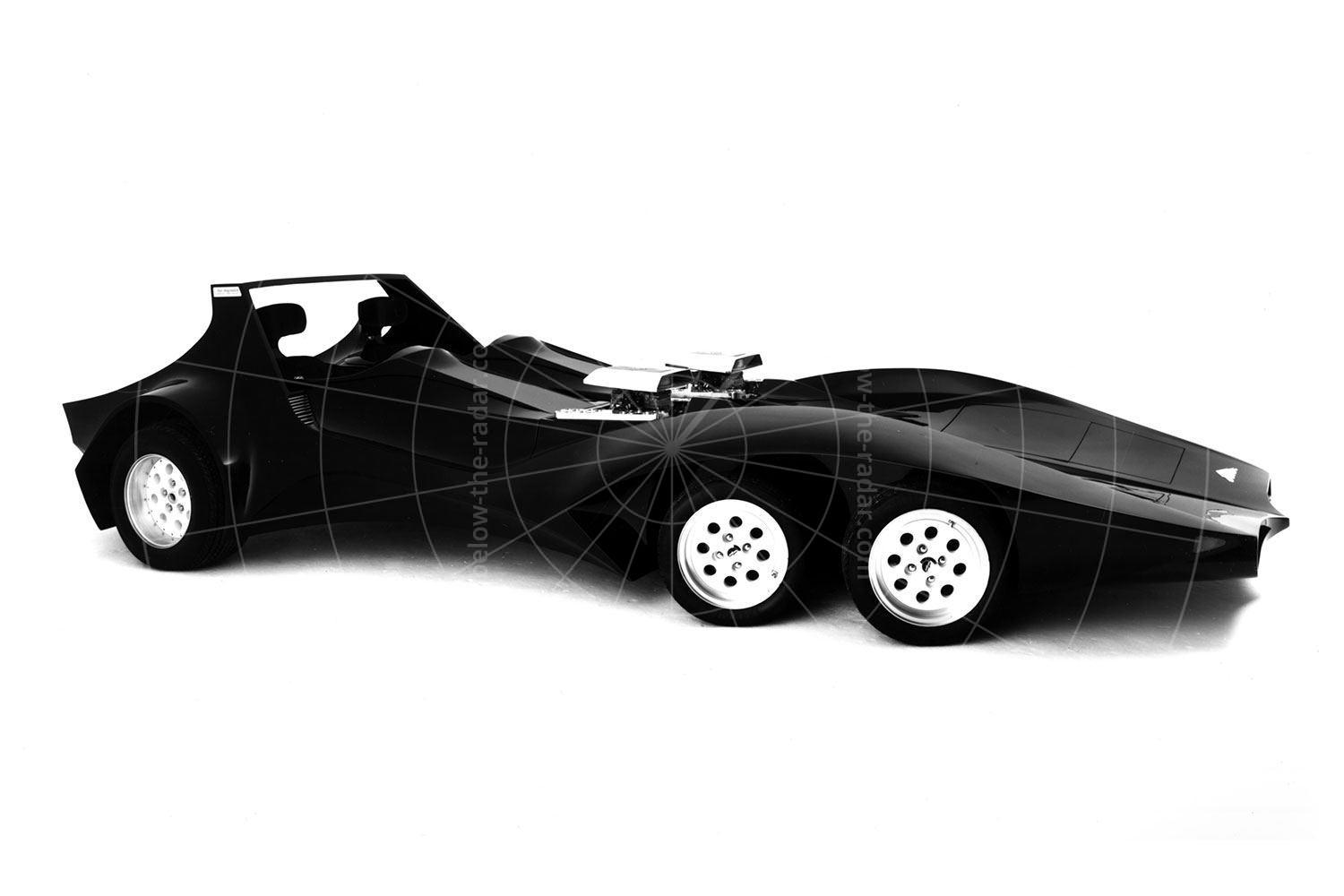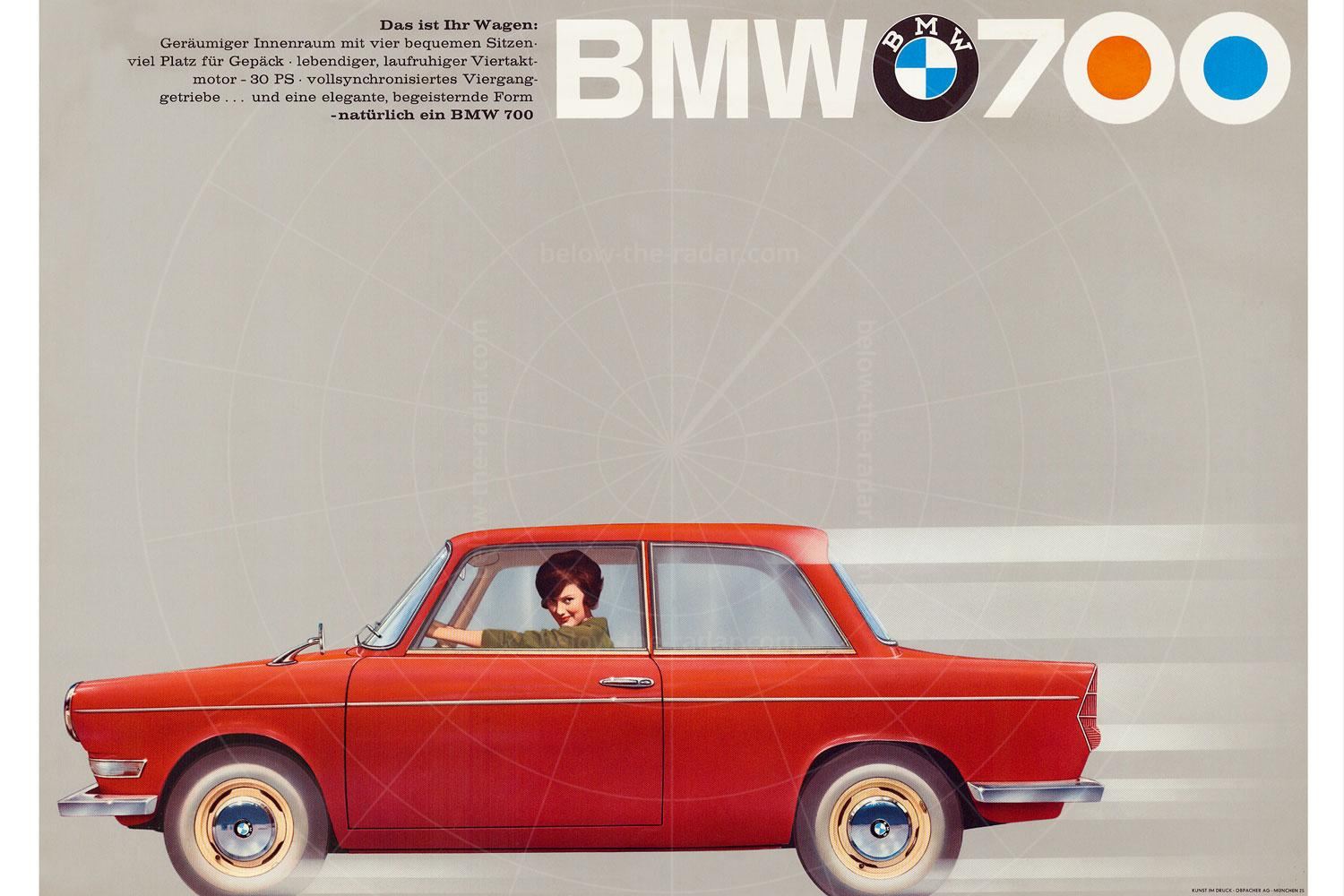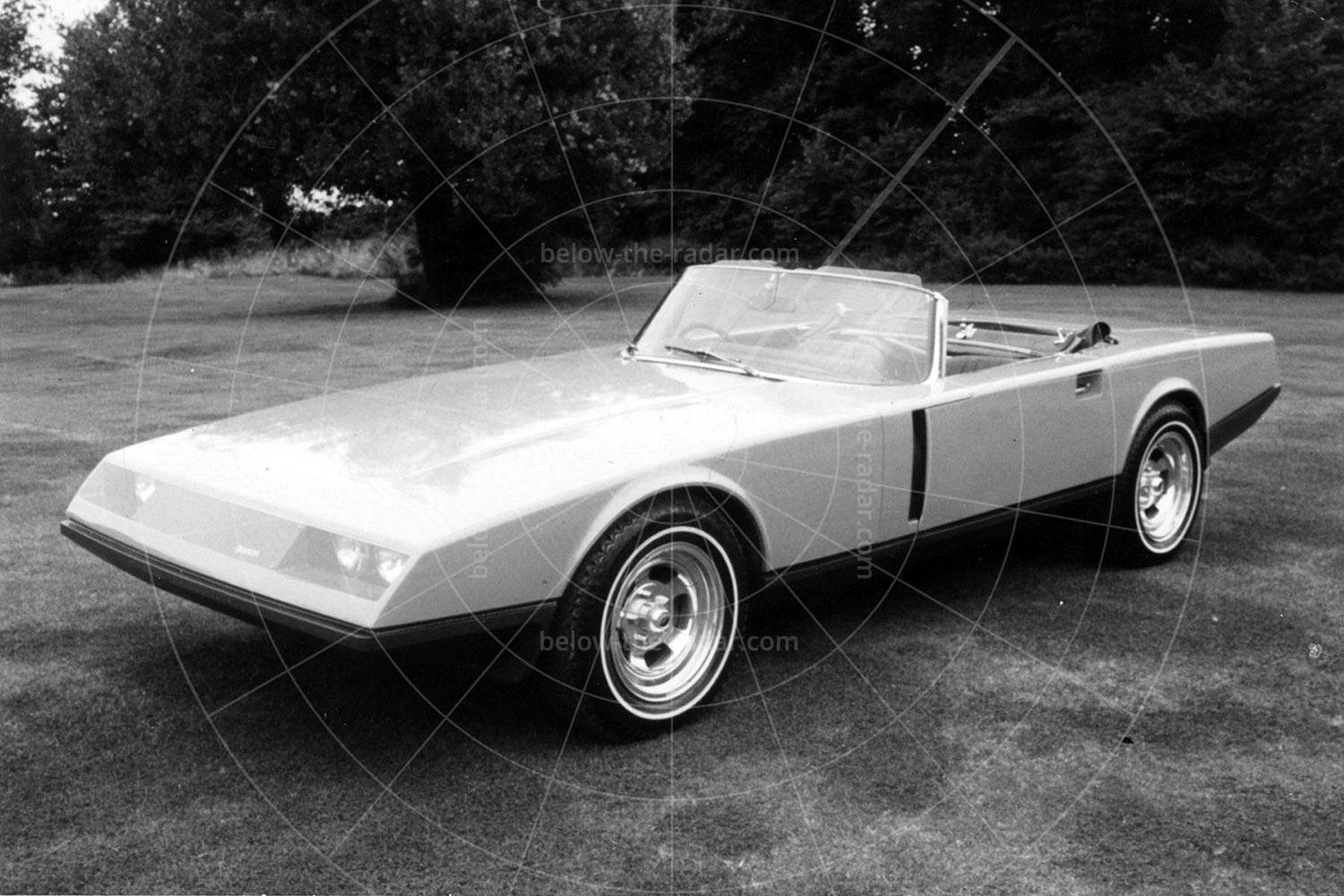In the late 1940s, American soldiers serving in Europe had acquired a taste for the small, light and stylish cars they saw on European roads, and as they returned stateside a number of them brought those cars home with them. Among the most popular of these sporty new imports were various models from the English manufacturer MG.
Americans had fallen in particular for the charming little MG TC, which would lead to sales that were previously unseen in the marque’s history. The T-Series inspired a new wave of enthusiasts who fully established the marque in the hearts of American sports car fans. In 1950, the spindly and decidedly pre-war TC gave way to the much-improved TD which was wider, roomier and offered more stable handling thanks to its smaller wheels, independent front suspension plus rack-and-pinion steering. The engine was the same 1250cc XPAG four-cylinder unit carried over from the TC, its 55bhp giving leisurely straight-line performance, but returning an enjoyable and sprightly drive when the road got twisty.
With sports cars rapidly gaining in popularity, models like the Triumph TR2, Austin Healey 100 and Corvette made the traditionally styled TD look rather dated. The aftermarket industry was growing as owners personalised their cars to stand out from the crowd. A number of independent designers and hop-up shops began using glassfibre to make new bodies for a wide array of chassis.
Glassfibre was inexpensive, forgiving to work with and capable of being formed into virtually any shape a designer wanted. A number of enthusiasts turned to these aftermarket companies to source stylish new bodywork to keep their sporty cars looking fresh. A few, such as the young David Hawks of Los Angeles, went so far as to build their own personal interpretation of the perfect sports car.
Pictured here is David Hawks’ creation; the 1955 Hawk-MG Special, a 1952 MG TD wearing a one-off glassfibre body designed and built by David and his father, the famous Hollywood director Howard Hawks. The story of this car is nearly as intriguing as the gorgeous, Ferrari-like styling. It begins with the 1952 film Monkey Business starring Cary Grant, Marilyn Monroe, Ginger Rogers and Charles Coburn. The film was directed by Howard Hawks and the MG, then a standard TD, was featured in several scenes. After filming had finished, Howard Hawks acquired the car and offered it to his son David. But David would have none of it. He had seen a new Ferrari parked on the showroom floor of a Beverly Hills sports car dealer, and his heart was set on the svelte Italian beauty.
You can only imagine the conversation that took place when David refused the offer of a nearly new sports car from his father, but a compromise was ultimately reached and young David took possession of the MG. As part of the deal, a new body for the TD would be designed and fitted to the chassis so David could have the Ferrari looks without the expense. So, using resources at the movie studio, a small team consisting of David and Howard Hawks, one of David’s friends and some prop builders got to work constructing a new body out of glassfibre.
Starting with a drawing, the team made a wood and plaster buck, which they used to refine the shape. A female mould was built on top of it, and the body was built up inside that mould using glassfibre cloth. The team was skilled enough to add additional layers of matting in high-stress areas, and the body (minus the aluminum bonnet) was built in one piece.
The finished body was a gorgeous creation; one that gracefully combined the best elements of the Touring and Vignale styles of the Ferrari 166 Barchetta. The front end featured a lovely egg-crate grille, while the slab-sided simple flanks were dotted with Vignale-esque oval port holes. The body had no doors, which kept the body very rigid and gave it a clean look – with flanks that invoked the Touring-built Barchetta. Even special enamel Hawk badges were made for the front and rear body.
David Hawks enjoyed the car for a while, but he soon tired of it and moved on to something more modern. But subsequent owners recognised the aesthetic beauty, remarkably high-quality construction, and historical importance of the car and ensured its story lived on. The most notable of those enthusiasts was Gene Ponder of Texas, who kept a large collection of important sports and GT cars from the 1930s through the 1960s. He had a love for Ferraris as well as for MGs, so he was naturally attracted to the MG-Hawk. Ponder restored the car in 2007, enlisting the help of David Hawks to fine tune the details.
Today, the MG-Hawk remains in beautiful shape, as these pictures attest when the car was sold by Hyman Ltd, which described the car thus:
Repainted in Romany Red as original, the paint is in superb condition and the car features many fine details such as Lucas Tri-Bar headlamps, polished alloy grille and port-hole vents, and a set of sparkling Borrani wire wheels shod with period-correct Michelin radials. The interior is trimmed in new tan leather, and floors lined in German squareweave carpet, maintaining a wonderful period feel.
Performance lives up to the looks thanks to the 1250cc XPAG engine which was fully rebuilt by Ponder, and fitted with a period Marshall Rootes-type supercharger. The engine is beautifully detailed with a polished alloy valve cover, polished and detailed blower, and period correct fittings. Louvred alloy inner wings show the attention to detail given the construction of the MG-Hawk. The chassis mechanicals are all MG TD, and have been highly detailed to match the sparkle of the beautiful coachwork.
Many thanks to Hyman Ltd for the use of its pictures to illustrate this article.



